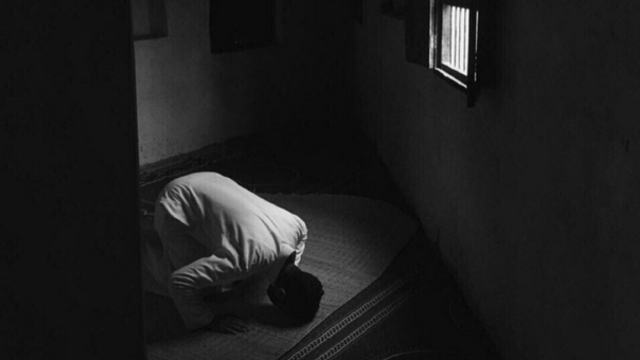Many middle and high school female students contact us about their clothing, which is sometimes perceived as an “ostentatious sign of religious affiliation” by their school.
Can I be prohibited from wearing a tunic, loose pants, skirt or long dress within my school?
What does the law say?
Regarding clothing choice:
- First, LAW No. 2004-228 of March 15, 2004, which regulates the wearing of signs or attire openly manifesting a religious affiliation in public schools, middle schools, and high schools, in application of the principle of secularism, states:
“In public schools, middle schools, and high schools, the wearing of signs or attire by which students openly manifest a religious affiliation is prohibited“, such as headscarves, kippas, Sikh turbans or an overly visible cross (art. L. 141-5-1 of the Education Code).
However, students in public schools, middle schools, and high schools may wear discreet religious signs.
- The circular of May 18, 2004, relating to the implementation of the law of March 15, 2004, clearly states that the law “does not prohibit accessories and attire that are commonly worn by students without any religious significance. However, the law prohibits a student from claiming the religious character they would attach to it, for example, to refuse to comply with the rules applicable to student attire in the establishment” (art.2-1).
- According to case law, signs and attire whose wearing manifests a religious affiliation only because of the student’s behavior are also prohibited (CE, December 5, 2007). In addition to the religious sign stricto sensu, such as the headscarf, the prohibition also applies to the ostentatious nature of the manifestation and not to the sign itself.
The interpretation of this second category is less obvious and relies on the interpretation of the school authority. Such an interpretation can be based on two criteria: the permanent wearing of headgear (bandana, cap) and the categorical refusal to remove it for religious reasons (CE 5 Dec. 2007, M. and Mme Ghazal n° 295671; 10 June 2009 n°306798).
- Thus, the law of March 15, 2004 does not oppose the wearing of long skirts or dresses, loose clothing or accessories, which are not by nature religious attire and are commonly worn. Ordinary clothes such as long dresses or skirts are not, in principle, equated with religious attire. Prohibiting the wearing of long skirts or loose clothing, regardless of their colors, is an infringement on personal identity and freedom of expression. Clothes can, indeed, be worn out of personal taste, without religious connotation.
- No rule prohibits or regulates the wearing of “traditional” or “non-Western” clothing in the school context.
- While each school, through its internal regulations, is free to define rules regarding clothing by requiring in particular “proper attire” and clothing restrictions may be provided for hygiene, safety or “civility” reasons, these must be based on objective and non-discriminatory criteria.
- Freedom of clothing choice is guaranteed by the right to privacy in the sense of Article 8 of the Convention for the Protection of Human Rights and Fundamental Freedoms, which encompasses “an individual’s physical, psychological and social identity” (ECHR 8 November 2011 V. C. v. Slovakia, No. 18968/07). According to the case law of the European Court of Human Rights, the choice of one’s clothing is a component of the right to privacy and freedom of expression
- This freedom is even enshrined in the Education Code: “in middle schools and high schools, students have, in respect of pluralism and the principle of neutrality, freedom of information and freedom of expression” (art. 511-2 of the Education Code).
- The right to freedom of clothing is also recognized by Articles 4 and 10 of the Declaration of the Rights of Man and of the Citizen of August 26, 1789:
- Article 4 states that: ” Freedom consists of being able to do anything that does not harm others: thus, the exercise of the natural rights of each man has no limits except those which assure to the other members of the society the enjoyment of the same rights. These limits can only be determined by law. .
- Article 10 states that “No one shall be disquieted on account of his opinions, including his religious views, provided their manifestation does not disturb the public order established by law“.
What should I do?
If you are denied access to the educational institution or if you are summoned regarding your attire:
- Request the legal basis (law, circular, decree, internal regulations, etc.) that justifies the opposition to your choice of clothing.
- If you are denied access to the institution, request a written notification specifying the reason for refusal, i.e., your attire.
- Remind them that your attire has no religious connotation, that it is appropriate and commonly worn.
- Inform your parents of the situation and request a meeting with them and the school principal to promote mediation.
- If you are subject to disciplinary proceedings, check the reasons mentioned in the disciplinary council summons.
- If you are subject to temporary exclusion, this can only be done after an interview with you and your parents. Ask them to propose an alternative solution allowing you to access education under conditions equivalent to those of other students.
- You can alert the secularism reference person of the academy, the Director of Departmental Services of National Education (DSDEN), and the Rights Defender.
- If the disagreement persists, you can appeal to the national education mediator.
- Contact Equitas, which will provide you with support and legal assistance.
APPLICABLE REFERENCES:
Laws and Code Articles: Law No. 2004-228 of March 15, 2004, regulating, in application of the principle of secularism, the wearing of signs or attire manifesting an ostensible religious affiliation in public schools, colleges, and high schools; art. L. 141-5-1 of the Education Code; art. L. 111-1, L. 141-1 and L. 141-2 of the Education Code; article R. 511-12 of the Education Code; art. D. 511-43 of the Education Code; art. 1, 3, 4, and 5 of the 1960 Convention against Discrimination in Education; art. 4 and 10 of the Declaration of the Rights of Man and of the Citizen of August 26, 1789; art. 225-1 and 225-2 of the Penal Code; art. 8 of the Convention for the Protection of Human Rights and Fundamental Freedoms and art. 2 of Additional Protocol No. 1.
Circulars: Circular of May 18, 2004, on the implementation of Law No. 2004-228 of March 15, 2004, regulating, in application of the principle of secularism, the wearing of signs or attire manifesting a religious affiliation in public schools, colleges, and high schools; Circular No. 2014-059 “Application of the rule, preventive measures and sanctions”;
Case law: Council of State, December 5, 2007, No. 295671, No. 285394, No. 285395 and No. 285396; ECHR November 8, 2011 V. C. v. Slovakia, No. 18968/07.




